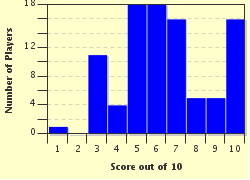Quiz Answer Key and Fun Facts
1. Passerine birds are those of the order Passeriformes, which encompasses the majority of bird species. They are often called "perching birds". Which of these bird groups are passerine?
2. Manakins comprise a family of birds called Pipridae. Their syringes (voiceboxes) are so distinctive that one can distinguish between species by looking at the syrinx alone. With species including the helmeted manakin and the blue-tailed manakin, this family can be found primarily on which continent?
3. Whydahs, a group of birds found in Africa, are brood parasites, laying their eggs in the nests of other birds, who then rear the young whydahs.
4. Which of these is a species of penguin that breeds on the coasts of Australia and New Zealand? In Australia it is often called a "fairy penguin", while in New Zealand it has the Maori name "korora".
5. Which of these birds has the species name Accipiter nisus? It is a small bird of prey that usually hunts in woodlands and gardens, feeding on smaller birds such as finches, tits, and starlings, and is itself hunted by larger birds of prey such as the golden eagle and tawny owl.
6. The great bustard is the only species in the Otis genus, and the male is often regarded as the heaviest flying living animal. Great bustards can be found in regions spotted throughout Eurasia, but which peninsula is home to more than half of the world's population?
7. Which of these names containing a geographical place is NOT the name of a real bird?
8. Most people have heard of Haliaeetus leucocephalus, the bald eagle. A bird of prey found in North America, it builds the largest tree nest of all animals. Which of these comprises its main source of food?
9. There is a species of bird called the crimson chat, sometimes known as the crimson-breasted nun.
10. Which of these owls has the species name Bubo lacteus, and is the largest owl in Africa? It is also the third largest owl in the world, and is named after a French ornithologist.
Source: Author
reeshy
This quiz was reviewed by FunTrivia editor
guitargoddess before going online.
Any errors found in FunTrivia content are routinely corrected through our feedback system.

